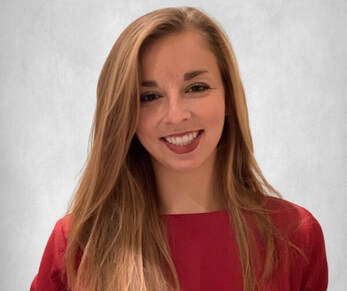Integrating Sports Medicine with the Osteopathic Philosophy
TouroCOM Harlem Student Wins Research Grant to Study Diagnosis, Treatment of Running Injuries with Osteopathic Manipulative Medicine (OMM)

Abbey Santanello, OMS IV at Touro College of Osteopathic Medicine, and her faculty advisor Professor Mikhail Volokitin, recently won a 2021 Student Research Fellowship Grant from the Touro College and University System to study the causes of common dysfunctions among runners and how to prevent injuries and relapses. We explored with Ms. Santanello her research and interest in osteopathic medicine.
Q: How did you become interested in pursuing a career in medicine – and in osteopathic medicine at Touro?
Growing up, I always knew I would go into medicine. My father is an osteopathic physician, so I gained an appreciation for the philosophy and hands-on manipulative techniques at a young age. Also, I realized the philosophy aligns with my personal values and interests in preventive medicine and care of the whole person. After college I pursued an M.S. in Entrepreneurship at the University of Notre Dame, where I earned my B.A. The program was a phenomenal opportunity to integrate my healthcare interests with a passion for innovation. I worked on a startup and also in healthcare administration for a couple of years before TouroCOM.
Q: How did you become interested in research and this topic?
As a runner myself, I've had several injuries and have been frustrated I cannot prevent them let alone treat them faster or reduce compensatory injuries. At school, we learn the anatomy and how to treat specific pain points and tender areas, which piqued my interest to combine my love of running with the assessments we do, to better understand injuries and how to best treat them. I realized osteopathic manipulation could help diagnose and treat these musculoskeletal injuries, which inspired me to create a research protocol to delve into this topic.
Q: Prior to winning the grant, you did a study titled “Osteopathic Assessment of Lower Extremity Somatic Dysfunctions in Runners”. What did you learn from that study and how do you plan to build on it going forward?
The first study was an initial assessment of a small group of runners in the Touro community. We found commonalities in the group and decided to expand the study further and hone in on a few trends, like flat-footedness in runners, to glean statistical significance with our study. We plan further study on common dysfunctions among runners, including causes of injuries, prevention, relapses and rehabilitation.
We are integrating the osteopathic philosophy with sports medicine. Running is an excellent way to condition your cardiovascular health and is certainly very popular. We hypothesize that many people run with aches and pains that are acute and chronic, and our preliminary research has confirmed this. With better understanding of the etiology of these injuries as well as utilizing osteopathic manipulation, we believe we can help patients recover faster, prevent future injuries, and reduce compensatory injuries.
Q: How does the osteopathic approach differ from other forms of treatment?
Osteopathic manipulative medicine (OMM) is a collection of hands-on techniques to diagnose, treat and prevent injury. It is often used to treat running injuries, using manipulation of the musculoskeletal system. It can be a supplement to traditional therapies - pharmacology, surgery and other conservative treatment measures - but it is also used on its own to fully treat patients too.
Q: How will you design your new study?
The study is a survey and an osteopathic physical assessment of runners. The participants will be categorized based on how many miles they run and how long they have been runners. The questions ask about their background running and range from previous injuries to types of shoes worn, since all of these aspects often influence pain. The assessment component is our clinical review of muscles, tendons, ligaments, and bones of the lower extremities to identify asymmetries, tenderness, and range of motion limitations. We will consider all aspects of a patient and consider the interrelationship of structure and function, especially with the musculoskeletal system. We will integrate the osteopathic philosophy by assessing body structure seen as a whole unit and not just separate organs, systems etc. when diagnosing and treating injuries.
Q: What career path do you envision after graduation? Do you see research in your future as a DO?
I am passionate about preventive medicine, and I think there is a lot of overlap with the osteopathic philosophy, so I envision integrating the two in future research. After graduation, I hope to eventually pursue a career in preventive medicine, which is an incredibly niche specialty that is interdisciplinary in nature, integrating epidemiology, public health and clinical medicine - oftentimes providing for populations with unmet healthcare needs.

